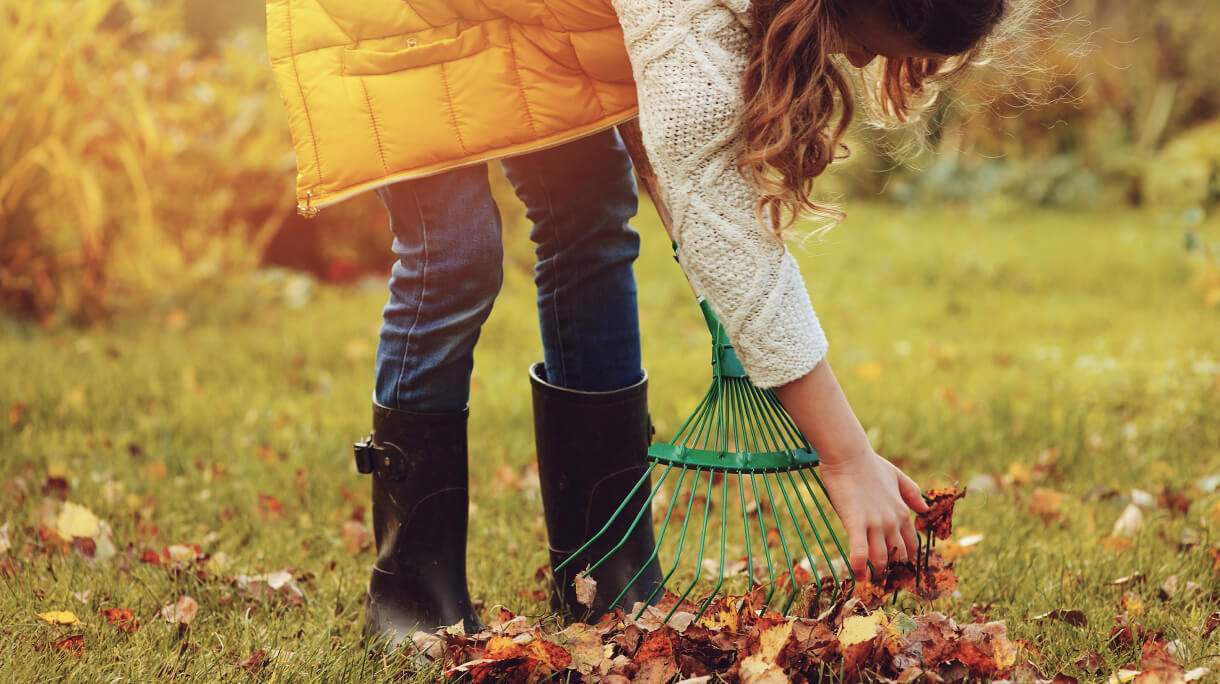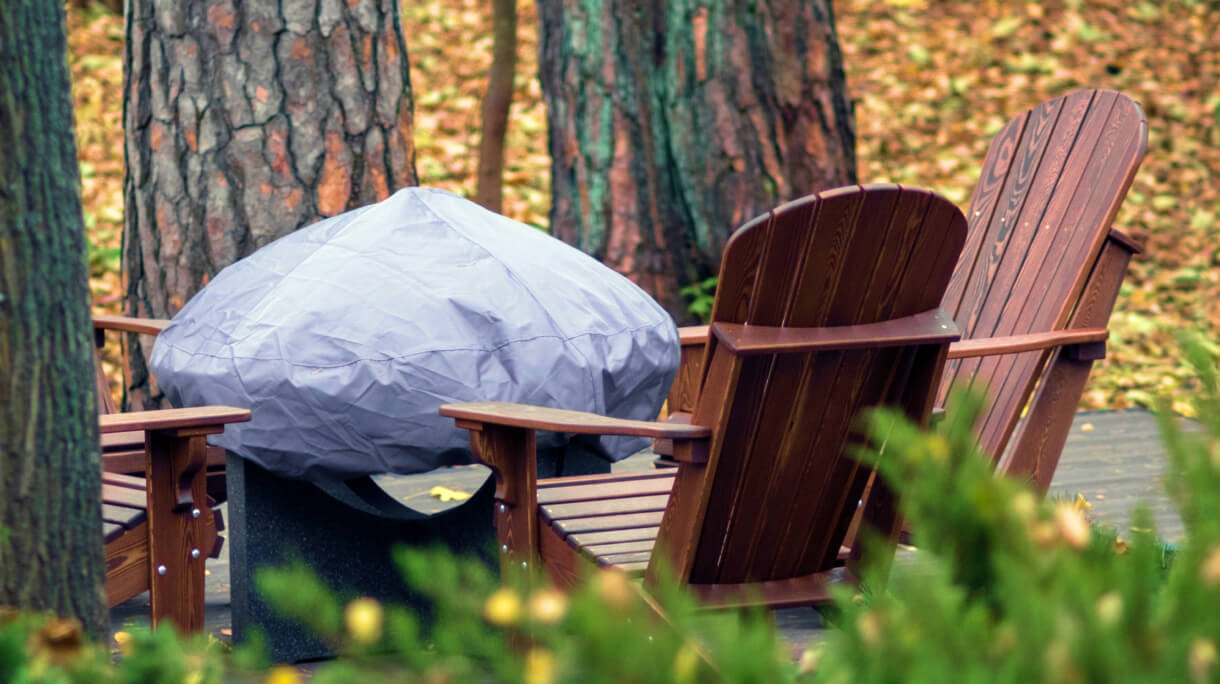Preparing your garden for winter
Spring and summer are undoubtedly the busiest times for home gardeners. However, gardens require some level of attention all year round. Take the time to prepare your garden for the winter throughout September, October, and November. With the right preparation, you can ensure that your garden continues to thrive in the next summer season.
We’ve gathered our top tips for garden winter preparation. Whether you’re an experienced or novice home gardener, read our guide below to get your garden ready for winter.
How to prepare your garden for the winter months
1. Harvest all remaining vegetables
Most garden vegetables can’t tolerate freezing temperatures. There are a few exceptions like brussels sprouts and kale, which can usually withstand the first frost. However, prolonged frost can still be detrimental to these plants. So, aim to harvest everything edible from your garden before the temperatures drop below minus.
After you’ve completed the harvest, consider covering your vegetable patch with a tarp or cardboard over the winter. The covering can help eliminate weeds and reduce the unwanted growth of sprouting seeds.
If you have plenty of vegetables to use up, read our guide to reducing food waste at home for ideas.

2. Assess your existing plants
The next step in your garden winter preparation routine is to check up on your existing plants.
Remove any weeds and diseased plants to avoid causing issues for the rest of the garden. You can also remove any dead plants, or alternatively, leave them to help add nutrients to the soil from natural decomposition.
Consider moving your potted plants inside to protect them. If that’s not an option, move your plants closer to the house to provide more shelter from harsh weather.
Utilise horticultural fleece and stakes to protect your tender plants staying outside. These helpful garden accessories can help to reduce the negative impact of cold temperatures and precipitation on your more delicate plants.
Before the frosty weather arrives, lift some of your annual plants or tender perennials such as dahlias. Uprooting your plants allows you to store them indoors, ready for the next growing season.
3. Refresh your soil
Many home gardeners tend to add fresh soil to their garden beds in the spring. However, autumn is actually the perfect time to add new compost.
Adding soil ahead of winter gives your soil more time to activate the nutrients before planting new growth in early spring. If you have a garden compost, this is an ideal opportunity to empty it and make use of the waste. You can also add some organic fertilisers to further enrich your soil.
Add a thick layer of mulch on top of the new soil. The mulch will help to regulate moisture and reduce the negative impact of freezing and thawing cycles throughout winter. The mulch layer will also help to prevent the fresh nutrients from washing below the root zone.

4. Prune and trim your plants carefully
Pruning and trimming are an important part of plant care. But, it’s crucial that you know when and which plants to prune.
Prune your perennials with care. While you can cut some plants back to soil level, others are actually better left untouched. The remaining stalks and leaves serve as protective layers for the plant crowns. Any remaining seeds can also offer nutrition for birds.
You can leave the pruning of roses and many trees and shrubs until winter and spring. But, you can prune your apple and pear trees as well as currant bushes ahead of winter. When pruning, make sure to remove any dead branches and shorten new growth.
5. Care for your lawn
Continue mowing your grass until it grows. Allowing your grass to become too long over winter can lead to the development of unsightly brown patches over time.
Ensure you eliminate any thatch and moss that may be growing in your lawn. Use a rake to gather fallen leaves, and consider reusing them for compost or mulch. Additionally, you may want to treat your grass with autumn lawn feed to prepare it to withstand winter conditions.

6. Cover your pond
Fallen leaves and other debris can cause blocked filters and foul smells in your pond water. Use a tightly-woven net to cover your pond. Place rocks or bricks over the corners of the net to secure it over the pond. Make sure to regularly remove any leaves that fall on top.
7. Choose winter plants for your garden
It can be nice to see some plants thriving in your garden under the winter sun. Evergreen shrubs, trees, and hedging like yew, bay, and holly make great winter plants. Other plants that can bring colour to your winter garden include:
- Daphne
- Camellia
- Sarcococca
- Snowdrops
- Hellebores
- Crocus
Late autumn and winter are also the best time to plant spring bulbs like tulips ready for next year. You won’t see their beauty until later, but you will thank yourself when the time comes.

8. Maintain your garden tools
Give your garden tools some TLC during winter time. Give them a good clean, sharpen any blunt edges and store them somewhere dry to prevent rust.
9. Look after wildlife
Your garden can make a great space for wildlife even during the colder seasons. Top up your bird feeder and water bath. Not only will you provide a food source for birds, but you also get to enjoy watching them from your window. Bug hotels are also a fantastic way to provide shelter for many insect species.
10. Protect or store away your garden furniture
Although garden furniture is for outdoor use, it can be susceptible to weather damage. To protect your garden furniture from such damage, store in a garage or shed, away from moisture. If you’re unable to relocate your garden furniture, consider using protective covers. These covers will ensure your furniture stays in excellent condition for years to come.

11. Evaluate the summer season’s successes and failures
With less time spent working on the garden as winter approaches, you have the opportunity to reflect on the summer. After all, it’s possible you might forget some details by the time next spring comes.
Think about what factors may have contributed to the poor performing plants. Consider whether these are likely to change next year and if it’s worth switching to a different plant instead. List everything that grew well to keep them in mind again for next year.
12. Think about your spring garden
Once your garden is ready to rest for winter, it’s time to take the first steps towards spring preparation. Spring always comes around quicker than you would think. So, take some time now to come up with a plan for next year.
You can start to consider any changes you want to make as well as making your plant choices. Then, you can order your seeds early and you’re good to go in a couple of months’ time!

Interested in reading more helpful advice on gardening, sustainability and how to save energy in the home? Browse our blog.





